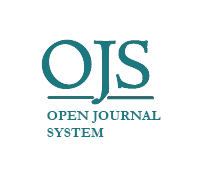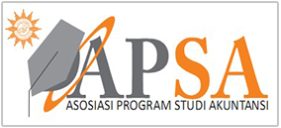Perkembangan Penelitian Akuntansi Zakat: Pendekatan Bibliometrik
DOI:
https://doi.org/10.22219/jrak.v12i3.22743Keywords:
Bibliometric, R-Studio, Zakat AccountingAbstract
This study aims to map zakat accounting research on the dimensions.ai database. A bibliometric approach is used to answer this goal so that it can describe the development of science through mapping research publications. Research data was collected from 1994 to 2022 with the keyword 'zakat accounting'. For this purpose, the author uses the R-Studio device. The results found that the collection of articles consisted of 210 documents. It was found that the most relevant journal was Jurnal Ekonomi Syariah Teori dan Terapan. While the journals that have the greatest impact are the International Journal of Islamic Middle Eastern Finance and Management and the Journal of Islamic Accounting and Business Research. Meanwhile, the most relevant and productive writers are Kudhori and Nurhayati. While the writer who has the biggest impact is Zaid. The latest topics in zakat accounting articles are shodaqoh, accountability, research, quality, and development. Meanwhile, 'sodaqoh' and 'research' are topics that will still emerge in 2022 and are predicted to continue to be used for the following years. Through this bibliometric approach, issues regarding zakat accounting become easier to find out, more cost efficient, and make it easy for researchers to determine topics that are widely used.
Downloads
References
Abdul Rahman, A. R. (2002). Zakat Accounting, Creating Business Wealth (August). Akauntan Nasional.
Abdul Rahman, A. R. (2007). Pre-Requisites For Effective Integration Of Zakah Into Mainstream Islamic Financial System In Malaysia. Islamic Economic Studies, 14(1), 91–107. http://iesjournal.org/English/Docs/088.Pdf
Abu Bakar, N. B. (2007). A Zakat Accounting Standard (ZAS) For Malaysian Companies. American Journal Of Islamic Social Sciences, 24(4), 74–92. https://doi.org/10.35632/ajis.v24i4.430
Akhyar Adnan, M., & Barizah Abu Bakar, N. (2009). Accounting Treatment For Corporate Zakat: A Critical Review. International Journal Of Islamic And Middle Eastern Finance And Management, 2(1), 32–45. https://doi.org/10.1108/17538390910946258
Al-Habshi, S. M. (2005). Zakat Recognition And Measurement Of Business Wealth: An Analysis Of The Growth Condition. In Shanmugam, B. Et Al. (Eds), Issues In Islamic Accounting, University Putra Malaysia Press, Serdang.
Al-Moghaiwli, M. H. (2001). Accounting For Zakat And Earnings Management In Saudi Arabia. Journal Of Accounting, Accountability And Performance, 1(7).
Alim, M. N. (2015). Utilization And Accounting Of Zakat For Productive Purposes In Indonesia: A Review. Procedia - Social And Behavioral Sciences, 211(September), 232–236. https://doi.org/10.1016/J.Sbspro.2015.11.028
Aria, M., & Cuccurullo, C. (2017). Bibliometrix: An R-Tool For Comprehensive Science Mapping Analysis. Journal Of Informetrics, 11(4), 959–975. https://doi.org/10.1016/J.Joi.2017.08.007
Azizah, N. (2019). Fenomena Zakat Dan Status Hukum Zakat Di Negara Muslim Dan Beberapa Wilayah Di Indonesia. Tasharruf: Journal Economics And Business Of Islam, 4(1), 20. https://doi.org/10.30984/Tjebi.V4i1.883
Bahari, Z., & Hamat, Z. (2004). Rethinking Zakat On Employment Income: The Case Of Malaysia. 6th ASEAN Inter-University Seminars On Social Development.
Bakar, M. A. (2018). Concept Of Revenue, Expenses And Liabilities In Accounting For Zakat, Waqf And Baitulmal In Malaysia : An Analysis From Shariah Perspective. International Journal Of Zakat, 3(Special Issue On Zakat Conference), 1–16. https://doi.org/10.37706/ijaz.v3i4.103
Chen, C. (2003). Mapping The Mind. In Mapping Scientific Frontiers: The Quest For Knowledge Visualization. Choice Reviews Online (Vol. 51, Issue 08). https://doi.org/10.5860/Choice.51-4399
El-Madani. (2013). Fiqih Zakat Lengkap. DIVA Press.
Firmansyah, I. (2021). Ten Years Of Jurnal Akuntansi Dan Keuangan Indonesia: A Bibliometric Study. Jurnal Akuntansi Dan Keuangan Indonesia, 18(1), 75–88. https://doi.org/10.21002/Jaki.2021.05
Firmansyah, I., & Rusydiana, A. S. (2021). Bibliometric Analysis Of Articles On Accounting And Covid-19 During The Pandemic. Library Philosophy And Practice, 2021, 1–15. https://digitalcommons.unl.edu/libphilprac/5179/
IAI. (2022). Standar Akuntansi Keuangan Syariah. PSAK 109 Tentang Akuntansi Zakat Dan Infak/Sedekah.
Islahi, A., & Obaidullah, M. (2004). Zakah On Stocks: Some Unsettled Issues. Journal Of King Abdulaziz University-Islamic Economics, 17(2), 3–17. https://doi.org/10.4197/Islec.21-1.6
Khan, M. A. (2003). Accounting Issues And Concepts For Islamic Banks. Accounting Issues In Islamic Banking, The Institute Of Islamic Banking And Insurance.
Mursyidi. (2003). Akuntansi Zakat Kontemporer. Rosda Karya.
Nawawi, I. (2013). Manajemen Zakat Dan Wakaf. Viv Press.
Nurhayati, S., & Wasilah. (2019). Akutansi Syariah Di Indonesia. Salemba Empat.
Oktavendi, T. W., & Mu’ammal, I. (2021). The Role Of Risk, Trust And Social Influence On ZIS Online Payment Adoption Model : Generation-Z Perspectives. Jurrnal Reviu Akuntansi Dan Keuangan, 11(2), 430–446. https://doi.org/10.22219/Jrak.V11i2.17400
Oktavendi, T. W., & Mu’ammal, I. (2022). Acceptance Model For Predicting Adoption Of Zakat, Infaq, And Sodaqoh (ZIS) Digital Payments In Generation Z. Journal Of Islamic Accounting And Business Research, 13(4), 684–700. https://doi.org/10.1108/JIABR-09-2021-0267
Setiyawati, H. (2020). Analysis Of Zakat Accounting And The Role Of The Internal Control System Based On Financial Accounting Standards Guidelines (PSAK 109) Zakat Agency In Indonesia. International Journal Of Financial Research, 12(1), 192. https://doi.org/10.5430/Ijfr.V12n1p192
Sulaiman, M. (2003). The Influence Of Riba And Zakat On Islamic Accounting. Indonesian Management And Accounting Review, 2(2), 149.
Syahara, Z., & Handayati, P. (2020). Study Of Financial Accounting Phenomenology Of Zakat Institutions. Kne Social Sciences, 2020, 305–338. https://doi.org/10.18502/Kss.V4i9.7334
Uyob, R. (2020). Current Research In Zakat Accounting Research. International Journal Of Business And Management, 4(3), 40–49. https://doi.org/10.26666/Rmp.Ijbm.2020.3.5
Downloads
Published
Issue
Section
License
Copyright (c) 2022 Irman Firmansyah, Dede Arif Rahmani Rahmani

This work is licensed under a Creative Commons Attribution-NonCommercial-ShareAlike 4.0 International License.

Jurnal Reviu Akuntansi dan Keuangan is licensed under a Creative Commons Attribution-NonCommercial-ShareAlike 4.0 International License.
Authors who publish with this journal agree to the following terms:
- Authors retain copyright and grant the journal right of first publication with the work simultaneously licensed under a Creative Commons Attribution-NonCommercial-ShareAlike 4.0 International License that allows others to share the work with an acknowledgement of the work's authorship and initial publication in this journal.
- Authors are able to enter into separate, additional contractual arrangements for the non-exclusive distribution of the journal's published version of the work (e.g., post it to an institutional repository or publish it in a book), with an acknowledgement of its initial publication in this journal.
- Authors are permitted and encouraged to post their work online (e.g., in institutional repositories or on their website) prior to and during the submission process, as it can lead to productive exchanges, as well as earlier and greater citation of published work (See The Effect of Open Access).










